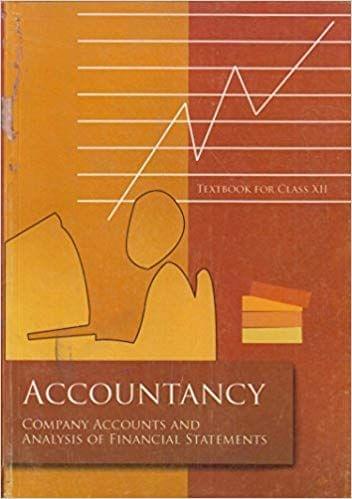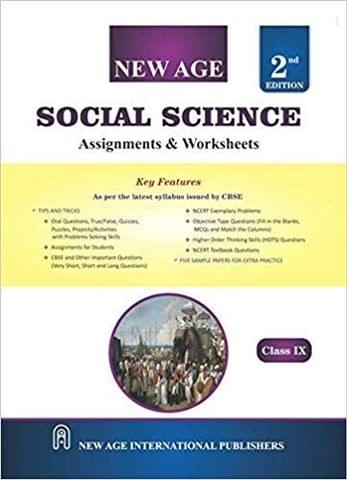Topics covered in this book are:
FOREWORD
Chapter 1 Accounting for Share Capital
1.1 Features of a Company
1.2 Kinds of a Company
1.3 Share Capital of a Company
1.4 Nature and Classes of Shares
1.5 Issue of Shares
1.6 Accounting Treatment
1.7 Forfeiture of Shares
Chapter 2 Issue and Redemption of Debentures
2.1 Meaning of Debentures
2.2 Distinction between Shares and Debentures
2.3 Types of Debentures
2.4 Issue of Debentures
2.5 Over Subscription
2.6 Issue of Debentures for Consideration other than Cash
2.7 Issue of Debentures as a Collateral Security
2.8 Terms of Issue of Debentures
2.9 Interest on Debentures
2.10 Writing off Discount/Loss on Issue of Debentures
2.11 Redemption of Debentures
2.12 Redemption by Payment in Lump Sum
2.13 Redemption by Purchase in Open Market
2.14 Redemption by Conversion
2.15 Sinking Fund Method
Chapter 3 Financial Statements of a Company
3.1 Meaning of Financial Statements
3.2 Nature of Financial Statements
3.3 Objectives of Financial Statements
3.4 Types of Financial Statements
3.5 Form and Contents of Income Statement
3.6 Form and Contents of Balance Sheet
3.7 Some Peculiar Items
3.8 Uses and Importance of Financial Statements
3.9 Limitations of Financial Statements
Chapter 4 Analysis of Financial Statements
4.1 Meaning of Financial Analysis
4.2 Significance of Financial Analysis
4.3 Objectives of Financial Analysis
4.4 Tools of Financial Analysis
4.5 Comparative Statements
4.6 Common Size Statement
4.7 Trend Analysis
4.8 Limitations of Financial Analysis
Chapter 5 Accounting Ratios
5.1 Meaning of Accounting Ratios
5.2 Objectives of Ratio Analysis
5.3 Advantages of Ratio Analysis
5.4 Limitations of Ratio Analysis
5.5 Types of Ratios
5.6 Liquidity Ratios
5.7 Solvency Ratios
5.8 Activity (or Turnover) Ratios
5.9 Profitability Ratios
Chapter 6 Cash Flow Statement
6.1 Nature of Cash Flow Statement
6.2 Benefits of Cash Flow Statement
6.3 Cash and Cash Equivalents
6.4 Cash Flows
6.5 Classification of Activities for the Preparation of Cash Flow Statement
6.6 Ascertaining Cash Flow from Operating Activities
6.7 Ascertainment of cash flow from investing and Financing Activities
6.8 Preparation of Cash Flow Statement
Salient Features of the Textbook
Exercises at the end of each chapter let the students self-assess their acquired knowledge base.
It comes with chapters that have been divided into subchapters so that the students can learn all of the elementary concepts, one at a go.
The pre-solved examples let the students understand each and every step of a problem clearly so as to enable them to further do it all by themselves. 9789350073421-
- Home
- School
- NCERT Books
- Accountancy Textbook Company Accounts and Analysis of Financial Statements for Class - 12
Accountancy Textbook Company Accounts and Analysis of Financial Statements for Class - 12
Author: NCERT EXPERTS
Brand: National Council of Educational Research and Training
| VARIANT | SELLER | PRICE | QUANTITY |
|---|
Description of product
Topics covered in this book are:
FOREWORD
Chapter 1 Accounting for Share Capital
1.1 Features of a Company
1.2 Kinds of a Company
1.3 Share Capital of a Company
1.4 Nature and Classes of Shares
1.5 Issue of Shares
1.6 Accounting Treatment
1.7 Forfeiture of Shares
Chapter 2 Issue and Redemption of Debentures
2.1 Meaning of Debentures
2.2 Distinction between Shares and Debentures
2.3 Types of Debentures
2.4 Issue of Debentures
2.5 Over Subscription
2.6 Issue of Debentures for Consideration other than Cash
2.7 Issue of Debentures as a Collateral Security
2.8 Terms of Issue of Debentures
2.9 Interest on Debentures
2.10 Writing off Discount/Loss on Issue of Debentures
2.11 Redemption of Debentures
2.12 Redemption by Payment in Lump Sum
2.13 Redemption by Purchase in Open Market
2.14 Redemption by Conversion
2.15 Sinking Fund Method
Chapter 3 Financial Statements of a Company
3.1 Meaning of Financial Statements
3.2 Nature of Financial Statements
3.3 Objectives of Financial Statements
3.4 Types of Financial Statements
3.5 Form and Contents of Income Statement
3.6 Form and Contents of Balance Sheet
3.7 Some Peculiar Items
3.8 Uses and Importance of Financial Statements
3.9 Limitations of Financial Statements
Chapter 4 Analysis of Financial Statements
4.1 Meaning of Financial Analysis
4.2 Significance of Financial Analysis
4.3 Objectives of Financial Analysis
4.4 Tools of Financial Analysis
4.5 Comparative Statements
4.6 Common Size Statement
4.7 Trend Analysis
4.8 Limitations of Financial Analysis
Chapter 5 Accounting Ratios
5.1 Meaning of Accounting Ratios
5.2 Objectives of Ratio Analysis
5.3 Advantages of Ratio Analysis
5.4 Limitations of Ratio Analysis
5.5 Types of Ratios
5.6 Liquidity Ratios
5.7 Solvency Ratios
5.8 Activity (or Turnover) Ratios
5.9 Profitability Ratios
Chapter 6 Cash Flow Statement
6.1 Nature of Cash Flow Statement
6.2 Benefits of Cash Flow Statement
6.3 Cash and Cash Equivalents
6.4 Cash Flows
6.5 Classification of Activities for the Preparation of Cash Flow Statement
6.6 Ascertaining Cash Flow from Operating Activities
6.7 Ascertainment of cash flow from investing and Financing Activities
6.8 Preparation of Cash Flow Statement
Salient Features of the Textbook
Exercises at the end of each chapter let the students self-assess their acquired knowledge base.
It comes with chapters that have been divided into subchapters so that the students can learn all of the elementary concepts, one at a go.
The pre-solved examples let the students understand each and every step of a problem clearly so as to enable them to further do it all by themselves.
Renting Guidelines
Specification of Products
| Brand | National Council of Educational Research and Training |
Related products
User reviews
INFORMATION
ADDRESS
Trubrain Education India Pvt Ltd"VV Square"building, Plot.No.TS 710/1b1 & 2B1, CMC Ward No 18, Moka road, Gandhinagar, Ballari-583 101.
Bellari
Karnataka - 583101
IN
Welcome to our online bookstore, the ultimate destination for book lovers, stationery enthusiasts, and curious minds of all ages. With our extensive selection of books, including bestsellers, new releases, and used books, as well as a range of stationary, toys, and reading accessories, we have everything you need to ignite your imagination and satisfy your curiosity.
Whether you're looking for an exciting sci-fi novel, an inspiring biography, or a fun activity book for your kids, our online bookstore has it all. We offer a wide variety of genres, including fiction, non-fiction, children's books, and educational books, so you're sure to find something that sparks your interest.
In addition to traditional books, we also offer e-books for those who prefer to read on their electronic devices. And if you're looking for a more sustainable option, our used books section offers pre-owned books in great condition, helping to reduce waste and save money.
To complement our extensive book selection, we also offer a range of high-quality stationery, including art supplies, pens and pencils, notebooks, and journals. Whether you're an aspiring artist, a student, or a professional, we have everything you need to unleash your creativity and get organized.
And for those who prefer to rent rather than purchase, our book rental service allows you to enjoy your favorite books for a limited time at an affordable price.
At our online bookstore, we're committed to providing our customers with the best possible shopping experience. Our user-friendly website makes it easy to find and purchase your favorite books and stationery items, and our fast and reliable shipping ensures that your products are delivered to your doorstep in no time.
So whether you're a seasoned reader, a curious learner, or a parent looking for educational resources for your kids, we invite you to explore our selection and discover a world of endless possibilities. Shop with us today and experience the joy of reading and learning.













